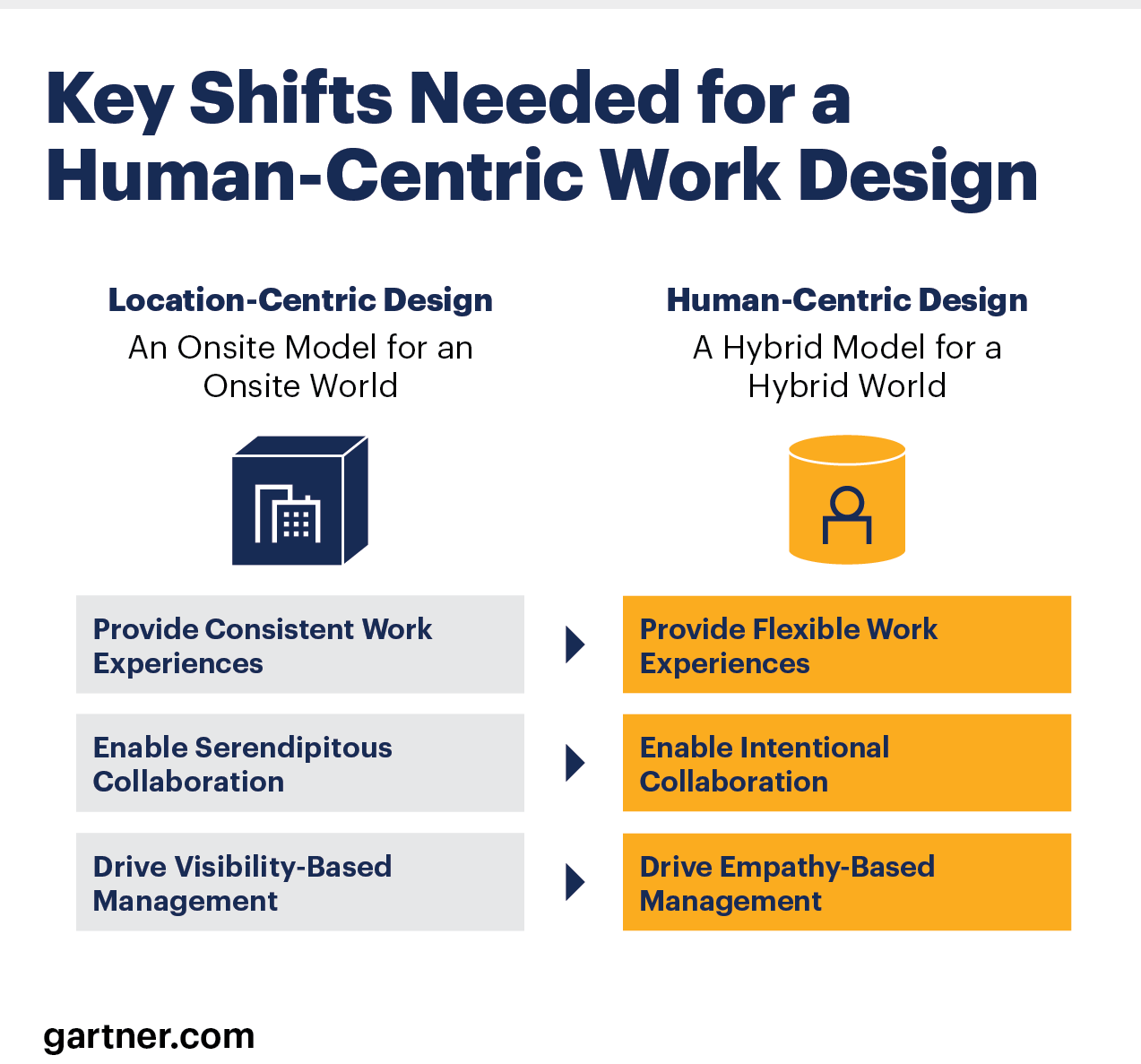Gartner: 61% of supply chain leaders surveyed expect hybrid work model for frontline workers
Gartner’s annual Future of Supply Chain Survey highlights transformation towards a human-centric work model

Sixty-one percent of supply chain leaders believe that the acceleration of remote work due to the pandemic will create a permanent hybrid work model, even at the frontline, according to analyst company Gartner. The annual Gartner Future of Supply Chain survey of 983 supply chain leaders from August to October 2021 identified the changes that will most likely shape global supply chains in the years to come.
“In an environment of talent and labor shortage, supply chain leaders anticipate employee expectations to become more demanding and feel that they must prepare to meet those expectations – or lose to competitors that do,” said Suzie Petrusic, director of research with the Gartner Supply Chain practice. “Fifty-seven percent of respondents believe that those intensified employee expectations will also increase the costs of attracting, hiring and retaining talent.”
To remain competitive, supply chain leaders should transform their organization from a location-centric to a human-centric work design. This means making three strategic changes: flexible work experiences for frontline workers; enabling “intentional” collaboration; and driving empathy-based management.
While organizations have learned a lot about hybrid work throughout the pandemic, those lessons rarely apply to operational and frontline staff - employees whose tasks require them to show up physically. The supply chain has a deep dependency on the stability of the schedules of these frontline workers. This stems from a history of finding talent willing to adjust to the supply chain’s scheduling needs. This is not the case anymore, and the supply chains that achieve flexibility at the frontline will win the talent competition of the future.
“Supply chain leaders have two levers here. They can invest in technology to reduce their reliance on humans for frontline operational execution, where work is most inflexible, and they can find ways to increase frontline worker flexibility,” Petrusic said. “Only a small number of survey respondents are currently taking the technology route. However, 56% say that they are investing to design work primarily for flexibility.”
As a result of those investments, the supply chain of the future will be marked by flexible workspaces and work schedules, such as part-time shifts and the possibility for employees to schedule and trade their own shifts. A smaller portion of that future supply chain will enable flexibility through technology, for example, through augmented and virtual reality, or exoskeletons.
Supply chain leaders have already begun to enable collaboration more intentionally, according to Gartner. For example, 62% of respondents are currently investing in providing policy and communication tools for seamless in-person and remote work relationships. The supply chain of the future will be characterized by agile workspaces, collaboration between remote and in-person employees, and collaboration-based training and upskilling programs.
In terms of empathy-based management change, Gartner added that supply chain leaders have realized that they must hold themselves – and their managers – accountable for diversity, equity and inclusion (DEI) and employee well-being, including protection against discrimination. Around three-quarters of respondents are investing to enforce equitable employment practices and provide employees with meaningful, purpose-driven initiatives in their work.
“With shifting employment models already being explored, supply chain leaders will want to ensure they can drive empathy for these nontraditional employees. They’ll need the proper organizational structure to do so, including focused leadership roles, such as directors of remote work or robotics,” Petrusic concluded.
Gartner clients can read more in “Supply Chain Executive Report: The Future of Supply Chain 2022.” Non-Gartner clients can find more information in the eBook “Reinventing the Supply Chain for the Future.”

Article Topics
Gartner News & Resources
Gartner foresees sizeable uptake for next-gen humanoid robots Gartner survey finds 49% of supply chain organizations have formal DEI objectives The pluses propelling cloud warehouse management systems (WMS) Gartner: 26% of supply chain C-suite roles now filled by women What’s keeping the supply chain C-Suite up at night? Materials handling robot basics Talking Supply Chain Podcast: Insights on leaders: The Top 25 More GartnerLatest in Materials Handling
Beckhoff USA opens new office in Austin, Texas Manhattan Associates selects TeamViewer as partner for warehouse vision picking ASME Foundation wins grant for technical workforce development The (Not So) Secret Weapons: How Key Cabinets and Asset Management Lockers Are Changing Supply Chain Operations MODEX C-Suite Interview with Harold Vanasse: The perfect blend of automation and sustainability Consultant and industry leader John M. Hill passes on at age 86 Registration open for Pack Expo International 2024 More Materials HandlingSubscribe to Materials Handling Magazine

Find out what the world's most innovative companies are doing to improve productivity in their plants and distribution centers.
Start your FREE subscription today.
April 2024 Modern Materials Handling

Latest Resources










